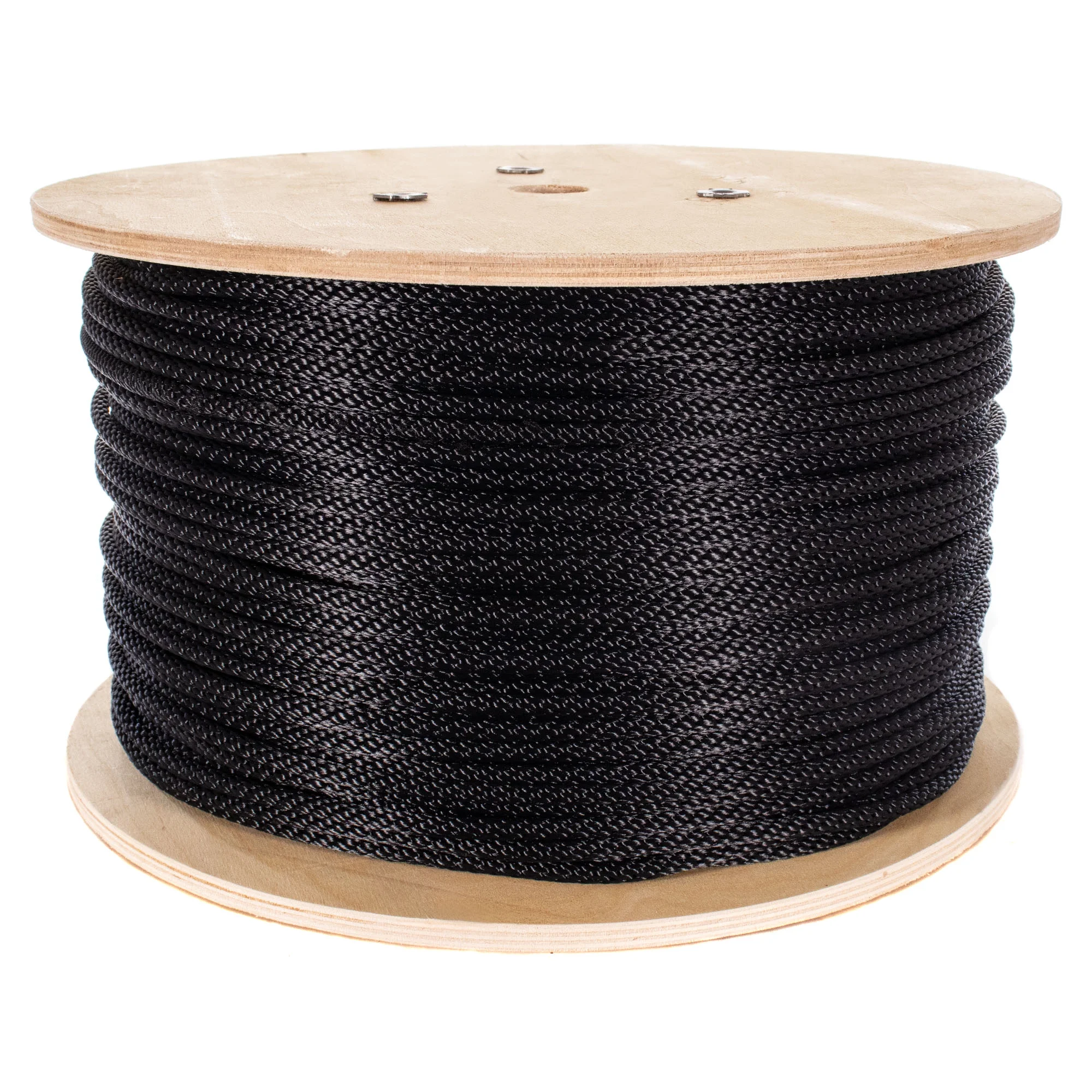Küresel kablo pazarı çok çeşitli endüstrilerin ayrılmaz bir parçasıdır, enerji dahil, telekomünikasyon, toplu taşıma, ve inşaat. Dünya gelişmeye devam ederken, Teknolojiler ve sürüş kablosu üretimi ve tüketimi de öyle. Kablo endüstrisi, geleceğini şekillendirmeyi vaat eden birçok önemli trendin kavşağındadır. 2025 ve ötesinde. Bu makalede temel trendler inceleniyor, büyüme etkenleri, zorluklar, ve küresel kablo pazarındaki fırsatlar, ZMS Cable gibi şirketlerin bu dinamik sektörde başarı için kendilerini nasıl konumlandırdıklarına dair içgörüler.

giriiş
Kablo pazarı önemli bir büyüme yaşıyor, teknolojik gelişmelerin bir kombinasyonu tarafından yönlendirilen, Altyapı ihtiyaçlarının artması, yenilenebilir enerji ve telekomünikasyon sektörlerinin yükselişi. İle 2025, Pazarın, birden fazla uygulamada yüksek performanslı kablolara yönelik talepte bir artışa tanık olması bekleniyor. Bu talebin kablo teknolojisindeki yeniliklerle artması bekleniyor, yenilenebilir enerji kaynaklarına geçiş, ve devam eden küresel altyapı patlaması.
ZMS Kablosu, kablo imalat sektörünün lider oyuncusu, bu trendlerden yararlanmak için benzersiz bir konumdadır, Küresel pazarın gelişen ihtiyaçlarını karşılamak üzere tasarlanmış geniş bir özelleştirilebilir ve yüksek kaliteli kablo yelpazesi sunuyoruz. Bu makalede, bu faktörleri araştıracağız ve küresel kablo pazarının geleceğini tahmin edeceğiz, temel etkenlere odaklanmak, pazar bölümlendirmesi, ve gelecekteki fırsatlar.
Küresel Kablo Pazarına Genel Bakış
Küresel kablo pazarı, enerji dağıtımı gibi çeşitli endüstrilerde kullanılan çok çeşitli kabloları içermektedir., telekomünikasyon, yapı, otomotiv, ve yenilenebilir enerji. Kablo türleri alçak gerilim güç kablolarından ileri teknoloji fiber optik kablolar. Pazar çok geniş, konutlar için temel elektrik kablolarından açık denizdeki petrol platformlarında veya yüksek hızlı veri iletim sistemlerinde kullanılan karmaşık kablolara kadar her şeyi kapsar.
Pazar son birkaç yılda güçlü bir büyüme eğilimi gösterdi, ve yıllık bileşik büyüme oranıyla genişlemeye devam etmesi bekleniyor (CAGR) ile ilgili 4-6% başından sonuna kadar 2025. Piyasa raporlarına göre, Güç kablosu segmenti küresel kablo pazarında en büyük payı oluşturuyor, ardından fiber optik kablolar, 5G ve yüksek hızlı internet altyapısının küresel ölçekte yaygınlaşmasıyla büyük önem kazanan.
Asya-Pasifik bölgesi şu anda kablo pazarına hakim durumda, Çin ve Hindistan gibi ülkelerdeki hızlı kentleşme ve sanayileşmenin etkisiyle. Teknolojideki gelişmeler nedeniyle Kuzey Amerika ve Avrupa da önemli paylara sahip, enerji altyapısı, ve telekomünikasyon ağları.

Kablo Pazarının Büyümesini Sağlayan Faktörler
Teknolojik Gelişmeler
Kablo pazarının en önemli faktörlerinden biri devam eden teknolojik gelişmelerdir.. Son yıllarda, kablo malzemeleri ve tasarımlarında önemli gelişmeler gördük, daha akıllı ve daha verimli kabloların geliştirilmesine öncülük ediyor. Örneğin, Yüksek kapasiteli fiber optik kabloların piyasaya sürülmesi, daha yüksek veri aktarım hızlarına olanak sağlayarak telekomünikasyon endüstrisinde devrim yarattı.
Dahası, Kablo yalıtım malzemeleri ve üretim tekniklerindeki yenilikler kabloları daha dayanıklı hale getirdi, esnek, ve çevresel faktörlere karşı dayanıklı, böylece sık sık değiştirme ihtiyacını azaltır. ZMS Kablo, gelişmiş üretim süreçlerini ve malzemelerini benimsemede ön sıralarda yer almaktadır, ürünlerinin yüksek performans ve güvenilirlik sunmasını sağlamak.
Altyapı Geliştirme
Dünya genelinde altyapı gelişiminin hızlı temposu, kablo pazarını harekete geçiren bir diğer önemli faktördür. Hükümetler ve özel sektör şirketleri yeni binaların inşasına yoğun yatırım yapıyor, ulaşım sistemleri, ve enerji altyapısı. Elektrik kabloları elektriğin dağıtımı için gereklidir, akıllı şehirlerde ve kentsel alanlarda güvenilir internet ve veri bağlantılarının sağlanmasında iletişim kabloları kritik önem taşırken.
Yeni altyapının inşası aynı zamanda enerji tasarruflu sistemler için kapsamlı kablolama ve kablolama gerektirir, HVAC sistemleri, ve veri merkezleri. Bu durum hem gelişmiş hem de gelişmekte olan ekonomilerde kablolara olan talebin önemli ölçüde artmasına yol açtı..
Yenilenebilir Enerji Sektörü
Dünya yenilenebilir enerjiye yönelmeye devam ederken, Yenilenebilir enerji sektöründe kablolara olan talep artıyor. Güneş, rüzgâr, ve hidroelektrik santraller, yenilenebilir kaynaklardan üretilen gücü iletmek için sağlam kablolara ihtiyaç duyar. Karbon emisyonlarının azaltılmasına ve iklim değişikliğinin hafifletilmesine artan vurgu, dünya çapında temiz enerji projelerine yatırımları teşvik etti, bu da yüksek performanslı kablolara olan ihtiyacı artırıyor.
ZMS Kablo bu eğilimin farkındadır ve yenilenebilir enerji sektörünün ihtiyaçlarını karşılamak üzere özel olarak tasarlanmış kablolar sağlamak için çalışmaktadır.. Dayanıklı olmaları, Hava koşullarına dayanıklı kablolar hem karadaki hem de denizdeki yenilenebilir enerji kurulumları için idealdir.
Telekomünikasyon Genişlemesi
Telekomünikasyon, kablo pazarının büyümesine katkıda bulunan bir diğer kritik sektördür. 5G ağlarının kullanıma sunulmasıyla birlikte, Fiber optik kablolara artan bir ihtiyaç var, daha yüksek bant genişliği ve daha hızlı veri iletim hızları sağlar. Bu özellikle internet servis sağlayıcıları için önemlidir., veri merkezleri, ve yüksek hızlı internet ve dijital hizmetlere yönelik artan talebi karşılamaya çalışan telekomünikasyon şirketleri.
Fiber optik kabloların önümüzdeki yıllarda katlanarak büyümesi bekleniyor, bulut bilişim gibi uygulamalarda verimli veri aktarımı ihtiyacından kaynaklanmaktadır, yapay zeka (yapay zeka), ve Nesnelerin İnterneti (Nesnelerin İnterneti).
Elektrikli Araç Şarj İstasyonları
Elektrikli araçların giderek daha fazla benimsenmesi (EV'ler) kablo pazarı için yeni ortaya çıkan bir diğer etken. Elektrikli mobiliteye küresel geçiş, EV şarj altyapısının kurulmasını gerektiriyor, büyük ölçüde yüksek kaliteye dayanan, Güvenli ve verimli çalışma için dayanıklı kablolar. Şarj istasyonları, yüksek güç yüklerini kaldırabilecek ve zorlu çevre koşullarına dayanabilecek kablolara ihtiyaç duyar.
Elektrikli araçlara talep arttıkça, uzmanlık ihtiyacı EV şarj istasyonları için kablolar artmaya devam edecek, kablo pazarına önemli bir büyüme fırsatı sağlıyor 2025 ve ötesinde.

Pazar Segmentasyonu
Küresel kablo pazarı çeşitli şekillerde bölümlere ayrılabilir, kablo türüne göre dahil, başvuru, ve bölge.
Kablo Tipi
Güç kabloları: Güç dağıtım şebekelerinde kullanılır, bu kablolar pazarın en büyük payını oluşturuyor. Alçak gerilim içerirler, orta gerilim, ve yüksek voltajlı kablolar, elektriğin uzak mesafelere iletilmesinde kullanılır.
Fiber Optik Kablolar: Bu kablolar, yüksek hızlı veri iletimi için kullanılıyor ve 5G ağlarının küresel olarak genişlemesi ve yüksek bant genişlikli hizmetlere olan talebin artması nedeniyle önemli ölçüde ilgi görüyor..
Telekomünikasyon Kabloları: Koaksiyel ve bükümlü çift kablolar, iletişim ağlarında veri ve sinyal iletimi için yaygın olarak kullanılır..
Özel Kablolar: Bu kategori belirli uygulamalar için tasarlanmış kabloları içerir, otomotiv kabloları gibi, denizaltı kabloları, yenilenebilir enerji sektöründe kullanılan kablolar ve kablolar.
Bölgesel Dağılım
Asya-Pasifik: Kablolar için en büyük pazar, Altyapı büyümesi ve sanayileşme nedeniyle Çin ve Hindistan gibi ülkelerdeki güçlü talep nedeniyle.
Kuzey Amerika: Yüksek performanslı kablolara yönelik güçlü talebin olduğu olgun bir pazar, özellikle telekomünikasyon için, güç dağıtımı, ve yenilenebilir enerji.
Avrupa: Avrupa pazarında çevre dostu kablolara ve yenilenebilir enerji projelerinde kullanılanlara olan talebin arttığına tanık oluyoruz.
Dünyanın Geri Kalanı: Latin Amerika'da gelişen pazarlar, Afrika, Orta Doğu'da kablo talebinde istikrarlı bir büyüme görülmesi bekleniyor, özellikle inşaat ve enerji sektörlerinde.

Küresel Kablo Pazarının Önemli Oyuncuları
Küresel kablo pazarı son derece rekabetçi, Birçok büyük üretici pazar payı için yarışıyor. Şirketler gibi ZMS Kablosu, Prysmian Grubu, Nexanlar, ve Southwire sektörün önde gelen oyuncularından bazılarıdır. Bu şirketler yüksek kaliteli kablolar sunarak kendilerini farklılaştırıyor, yenilikçi çözümler, ve sürdürülebilirlik taahhüdü.
ZMS Kablosu, Örneğin, çeşitli endüstrilerin özel ihtiyaçlarını karşılamak üzere tasarlanmış dayanıklı ve güvenilir kablolar üretme konusunda itibar kazanmıştır.. Şirketin sürdürülebilirliğe odaklanması, ürün özelleştirme, ve en son teknoloji, küresel kablo pazarında önemli bir oyuncu olarak kalmasını sağlıyor.
Kablo Pazarında Sürdürülebilirlik Trendleri
Sürdürülebilirlik kablo endüstrisinde önemli bir odak noktası haline geldi, şirketlerin çevresel etkilerini en aza indirmek için giderek daha fazla çalışmaları. Buna geri dönüştürülebilir ve çevre dostu kabloların geliştirilmesi de dahildir, üretim sırasında enerji tüketiminin azaltılmasının yanı sıra.
ZMS Kablo, uluslararası çevre standartlarına uygun ürünler tasarlayarak ve geri dönüştürülebilir malzeme kullanımına odaklanarak sürdürülebilirliği benimsemiştir.. Hükümetler ve kuruluşlar sürdürülebilirliğe daha fazla önem verdikçe, Çevre dostu kabloların pazardan daha büyük bir pay alması bekleniyor.
Kablo Endüstrisinin Karşılaştığı Zorluklar 2025
Umut verici büyüme beklentilerine rağmen, kablo endüstrisi çeşitli zorluklarla karşı karşıya. Bunlar şunları içerir::
Hammadde Fiyat Oynaklığı: Bakır ve alüminyum gibi malzemelerin fiyatları dalgalanmalara tabidir, üretim maliyetlerini etkileyebilecek.
Tedarik Zinciri Kesintileri: Küresel tedarik zinciri, COVID-19 salgını gibi faktörler nedeniyle kesintiye uğradı, kablo üretiminde gecikmelere ve maliyet artışlarına yol açıyor.
Yoğun Rekabet: Düşük maliyetli üreticilerin pazara girmesiyle, rekabet artıyor, özellikle gelişmekte olan ekonomilerde.
Çevre ve Güvenlik Düzenlemeleri: Daha sıkı çevre ve güvenlik düzenlemeleri, şirketlerin rekabetçi maliyetlerle kablo üretmesini daha da zorlaştırıyor.

Kablo Piyasasının Geleceğe Bakışı 2025
Küresel kablo pazarının sürekli büyüme göstermesi bekleniyor. 2025, telekomünikasyon gibi kilit sektörlerde artan talebin etkisiyle, yenilenebilir enerji, ve altyapı geliştirme. Akıllı şehirler gibi gelişen teknolojiler, Nesnelerin İnterneti, ve 5G ağları özel kablolara olan talebi daha da artıracak.
ZMS Cable'ın yeniliğe odaklanması, kalite, ve sürdürülebilirlik, gelişen kablo pazarında gelecekteki başarı için onu iyi bir konuma getiriyor.
Çözüm
Küresel kablo pazarı önemli bir büyümeye hazırlanıyor 2025, teknolojik gelişmelerden kaynaklanan, altyapı geliştirme, yenilenebilir enerji ve telekomünikasyon sektörlerinin yükselişi. ZMS Cable gibi şirketler yüksek kalite sunarak kendilerini bu alanda lider olarak konumlandırıyorlar., yenilikçi, ve sürdürülebilir kablo çözümleri.
Pazar geliştikçe, Şirketler uyarlanabilir kalmalı, Rekabetçi kalabilmek için ortaya çıkan trendlere ve yeni teknolojilere odaklanmak. Kablo pazarının geleceği parlak, ve bu değişiklikleri benimseyenler sektörün büyümesinde ön sıralarda yer alacak.
SSS
Küresel kablo pazarını yönlendiren temel trendler nelerdir??
Teknolojik gelişmeler, yenilenebilir enerji büyümesi, ve telekomünikasyonun genişlemesi temel faktörlerden bazılarıdır..
ZMS Cable gelecekteki büyüme için kendisini nasıl konumlandırıyor??
ZMS Kablo yeniliğe odaklanıyor, sürdürülebilirlik, ve küresel pazarın gelişen ihtiyaçlarını karşılamak için kişiselleştirme.
Kablo endüstrisi hangi zorluklarla karşı karşıyadır? 2025?
Hammadde fiyat oynaklığı, tedarik zinciri kesintileri, ve düzenleyici baskılar zorluklardan bazılarıdır.
Kablo pazarında en fazla büyümeyi hangi bölgelerin görmesi bekleniyor??
Asya-Pasifik, Kuzey Amerika, ve Avrupa'nın kablo pazarındaki büyümeye öncülük etmesi bekleniyor.


